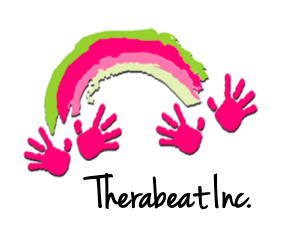Hello everyone! My name is Kennedi Walz. I am extremely excited to be doing my internship at Therabeat! I was uncertain of what my internship would look like during these trying times, but I am very thankful I was welcomed at Therabeat. I am originally from Manchester, TN, but have called Chattanooga, TN my home for the past four and a half years. I love to be outside and enjoy warm weather! I love to hike and travel. I am a huge animal lover with a dog named Kupcake and four guinea pigs (that’s a whole other story)! I am a huge Disney fan! Growing up, my family trips would either be to Disney or the beach, probably a huge reason behind what I love now. Family time is always something I have cherished and I believe I always will. They have each made impacts in my life that have molded me into the person that I am today, which has guided me to where I am now.
I was introduced to music therapy whenever I was a senior in high school. I researched it and instantly knew that it was something I was very interested in. Music therapy combines my two passions: music and helping others. I have always been passionate about the two my whole life. I had many encounters and experiences on my journey on figuring out my life purpose, and quickly realized music therapy was it. I began college at Chattanooga State Community College where I received my Associates of Fine Arts in Music. I then transferred to the University of Tennessee at Chattanooga where I will graduate in Summer 2021! I will be the first student to graduate from the university with a degree in music therapy. I am beyond thankful for my time at UTC and the experience and knowledge I gained from being there.
My primary instrument is voice, but I also play the guitar, ukulele, and piano. I have had the pleasure of working with older adults with Parkinson’s Disease, children affected by cancer, adolescents with various special needs, and adults with IDD during my time in college. I also found a love of volunteering with the Miracle League of Chattanooga assisting children and adults with various special needs with playing baseball. Miracle League will forever hold a special place in my heart. No matter the day I am having, being able to help someone and “amplify [their] life” will always make my day brighter.
Starting at Therabeat was life changing for me. Moving somewhere where I know no one is very different for me and transitioning from a student in a classroom to an intern constantly moving has definitely been an adjustment. I have loved every minute of being at Therabeat. The atmosphere is extremely welcoming and it feels like I’ve been there for so much longer than a week. I have already experienced and learned so many new things! I love that I am able to learn from each music therapist, and that they are so helpful. Being adaptable and flexible is something I have been told all throughout my time as a music therapy student and, to all the MT students out there, I lived it my first week! The fast moving pace at the clinic is so much fun though and I love seeing all the smiling faces I pass daily; makes each day brighter. I know I will grow to be the best music therapist I can be here and I am excited for this adventure! Here’s to the next six months!
Love the life you live!
Best wishes, Kennedi Walz, Music Therapy Intern





